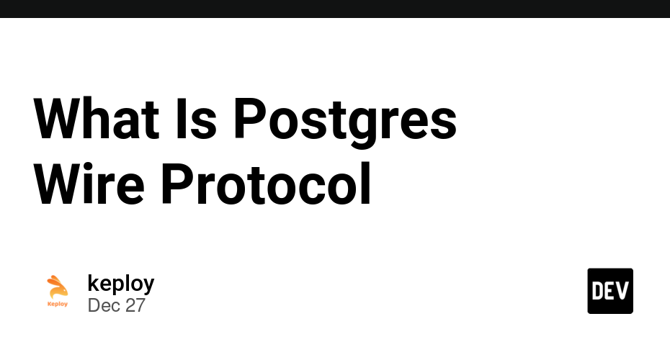Dev
1M
219

Image Credit: Dev
What Is Postgres Wire Protocol
- The PostgreSQL wire protocol is specifically designed to handle complex database tasks such as transactions, secure authentication, and efficient data transfer.
- The protocol is tailored for database-specific operations, including query execution, transaction management, and high-concurrency workloads.
- The wire protocol supports long-lived connections, critical for high-performance databases.
- By supporting advanced authentication mechanisms, the protocol enhances security while reducing overhead in client-server interactions.
- The term "wire protocol" highlights its role as the fundamental layer enabling communication between a database client and server.
- The PostgreSQL wire protocol is a TCP-based protocol that follows a client-server model. It operates on the principle of request-response cycles, where the client sends a request to the server, and the server responds accordingly.
- The PostgreSQL wire protocol consists of three main phases: Startup Phase, Query Phase and Termination Phase.
- PostgreSQL also supports an extended query protocol. This protocol allows for more advanced features, such as prepared statements and parameterized queries.
- The Simple Query Protocol does not support prepared statements, so the query is parsed and planned each time it is executed.
- Understanding the technical aspects of the protocol, from its architecture to its message flow, is essential for developers working with PostgreSQL.
Read Full Article
13 Likes
For uninterrupted reading, download the app